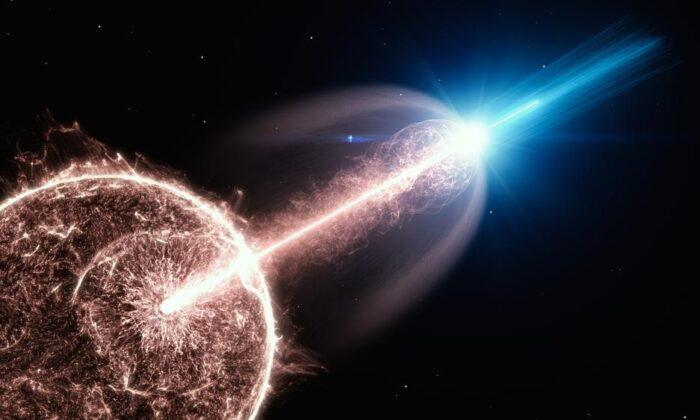An asteroid will be at its closest to Earth on March 21 and is expected to be the largest asteroid that will pass by us in 2021.
According to NASA, this asteroid, dubbed 2001 FO32, will make its closest approach at a distance of about 1.25 million miles (2 million kilometers). At such a great distance, it will have no impact on Earth.
Still, 2001 FO32 is considered a “potentially hazardous asteroid.” CNEOS computes high-precision orbits for near-Earth objects (NEOs) to improve long-term hazard assessments.
2001 FO32 will be traveling at around 77,000 mph (124,000 kph) when it passes by. Compared to other asteroids that encounter Earth, its speed is fast.
This is due to its highly inclined and elongated orbit around the sun, which is tilted 39 degrees to Earth’s orbital plane. One orbit takes about 810 days.
After this encounter, it will take decades to see this asteroid again. NASA predicts that 2001 FO32 will not come this close to Earth again until 2052, when it will pass by at about 1.75 million miles (2.8 million kilometers).
Asteroid 2001 FO32 was first discovered in March 2001 by the Lincoln Near-Earth Asteroid Research (LINEAR) program in Socorro, New Mexico. It was first estimated to be roughly 3,000 feet (1 kilometer) wide. Follow-up observations, however, suggested that the asteroid is likely smaller, between 1,300 and 2,230 feet (440 and 680 meters) wide.
Even though it is relatively small, 2001 FO32 will still be the largest asteroid to pass very close to Earth in 2021.
The last notably large asteroid that came near Earth was 1998 OR2 on April 29, 2020. While 2001 FO32 is smaller than 1998 OR2, it will be three times closer to Earth.

The March 21 encounter will be a great chance for astronomers to measure its size and other physical quantities.
“We’re trying to do geology with a telescope,” Vishnu Reddy, associate professor at the University of Arizona’s Lunar and Planetary Laboratory in Tucson, said in the statement.
“We’re going to use the IRTF [Infrared Telescope Facility] to get the infrared spectrum to see its chemical makeup,” Reddy added. “Once we know that, we can make comparisons with meteorites on Earth to find out what minerals 2001 FO32 contains.”
“Observations dating back 20 years revealed that about 15% of near-Earth asteroids comparable in size to 2001 FO32 have a small moon,” Lance Benner, principal scientist at NASA’s Jet Propulsion Laboratory, said in the statement. “Currently little is known about this object, so the very close encounter provides an outstanding opportunity to learn a great deal about this asteroid.”
Meanwhile, amateur astronomers can also have a good opportunity to observe 2001 FO32.
“The asteroid will be brightest while it moves through southern skies,” said Chodas in the statement. “Amateur astronomers in the southern hemisphere and at low northern latitudes should be able to see this asteroid using moderate size telescopes with apertures of at least 8 inches in the nights leading up to closest approach, but they will probably need star charts to find it.”




